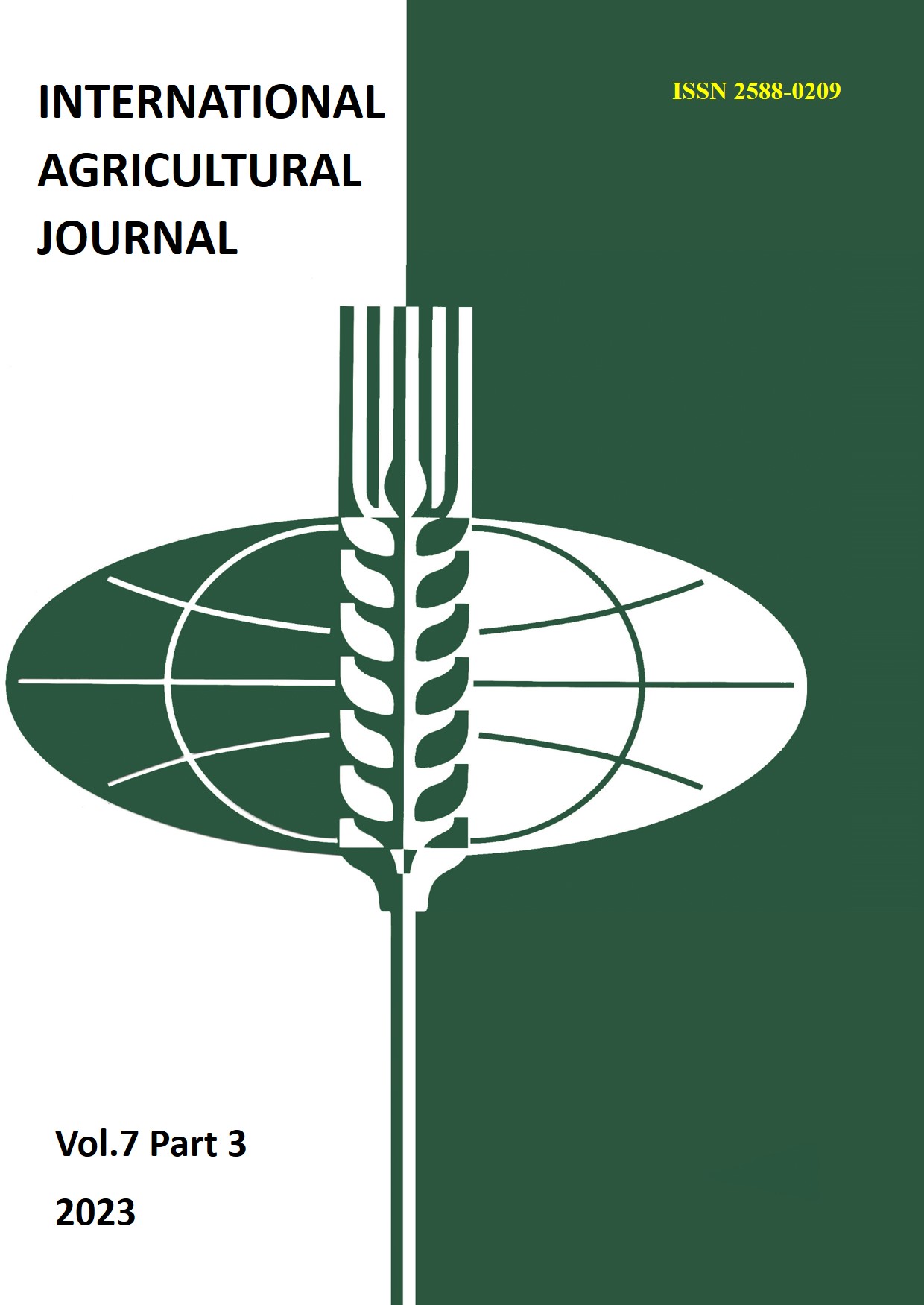TECHNOLOGY OF CULTIVATION OF SUNFLOWER MIXED WITH FORAGE CROPS IN YAKUTIA
Main Article Content
Abstract
Field forage production in Central Yakutia can provide more than 50% of the needs for juicy, vitamin and concentrated feeds by expanding forage crops, improving the technology of their cultivation and harvesting. The article includes a brief history of the study and cultivation of sunflower crops in Yakutia and the results of studies on the yield, nutritional value of sunflower mixed with forage crops. Sunflower has proved to be a promising crop for silage harvesting and the creation of a green conveyor in the conditions of Central Yakutia. Therefore, the study of sunflower and its mixtures is an urgent problem in the conditions of Yakutia. The experiments were conducted on the basis of the feed production laboratory in 2020-2021. Six variants of sunflower mixed with promising forage crops have been studied. All the studied options for yield and nutritional value are promising for silage harvesting. Among the studied crops, high growth is provided by a two–component mixture of sunflower (171 cm) + Sudanese grass (180 cm), slightly inferior to sunflower crops (156) with corn - 170 cm. The average yield of the green mass of sunflower and its mixtures ranged from 33.4 to 39.9 t/ha. Of the studied options, high yield is provided by sowing sunflower with corn – 39.9 t / ha of green mass. In terms of nutritional value, the best options are sunflower with spring vetch and sunflower with peas.
Article Details
References
2. Guney, E.; Tan, M.; Yolcu H. Yield and quality characteristics of sunflower silages in highlands, Turkish Journal of Field Crops, 2012, 17(1): 31-34.
3. Methodical manual on agro–energy and economic assessment of technologies and systems of feed production. - M.: Russian Agricultural Academy, 2000. – 52 S.
4. Methodological guidelines for conducting field experiments with forage crops. – M., 1997. – 156 p.
5. Dospekhov, B.A. Methodology of field experience / B.A. Dospekhov. – M.: Kolos, 1985. – 347 p.
6. The system of agriculture in the Republic of Sakha (Yakutia) for the period 2016-2020 / Methodological guide. - Yakut Research Institute.-Yakutsk, 2016. – 415 p.
7. Pestereva E.S., Pavlova S.A., Zakharova G.E. Adaptation of the technology of cultivation of promising annual crops by sowing dates in the conditions of Central Yakutia // Agrarian Science.-M., 2018.-No. 4. pp. 47-49.
8. Pavlova S.A., Pestereva E.S., Zakharova G.E., Kuzmina A.V., Zhirkova.N.N. The influence of sowing dates on the yield of promising annual fodder crops in the conditions of Central Yakutia// Agricultural science. - No.7.-S.2-3.
9. Pavlova S.A. Forage production in the RS (Ya): state and prospects/ Pavlova S.A., Pestereva E.S., Zakharova G.E. // Forage production. -2018.-No.5.-pp.5-8.
10. Popov, N.T. Field fodder production of Yakutia and ways of its intensification / N.T. Popov. – Yakutsk, 1987. – pp. 77-80.

